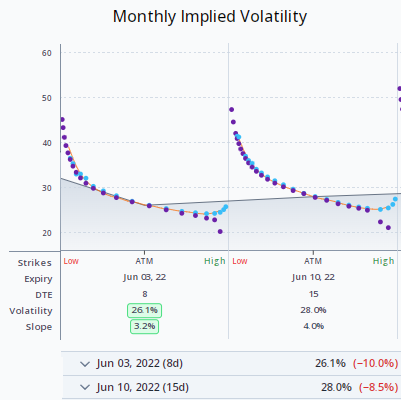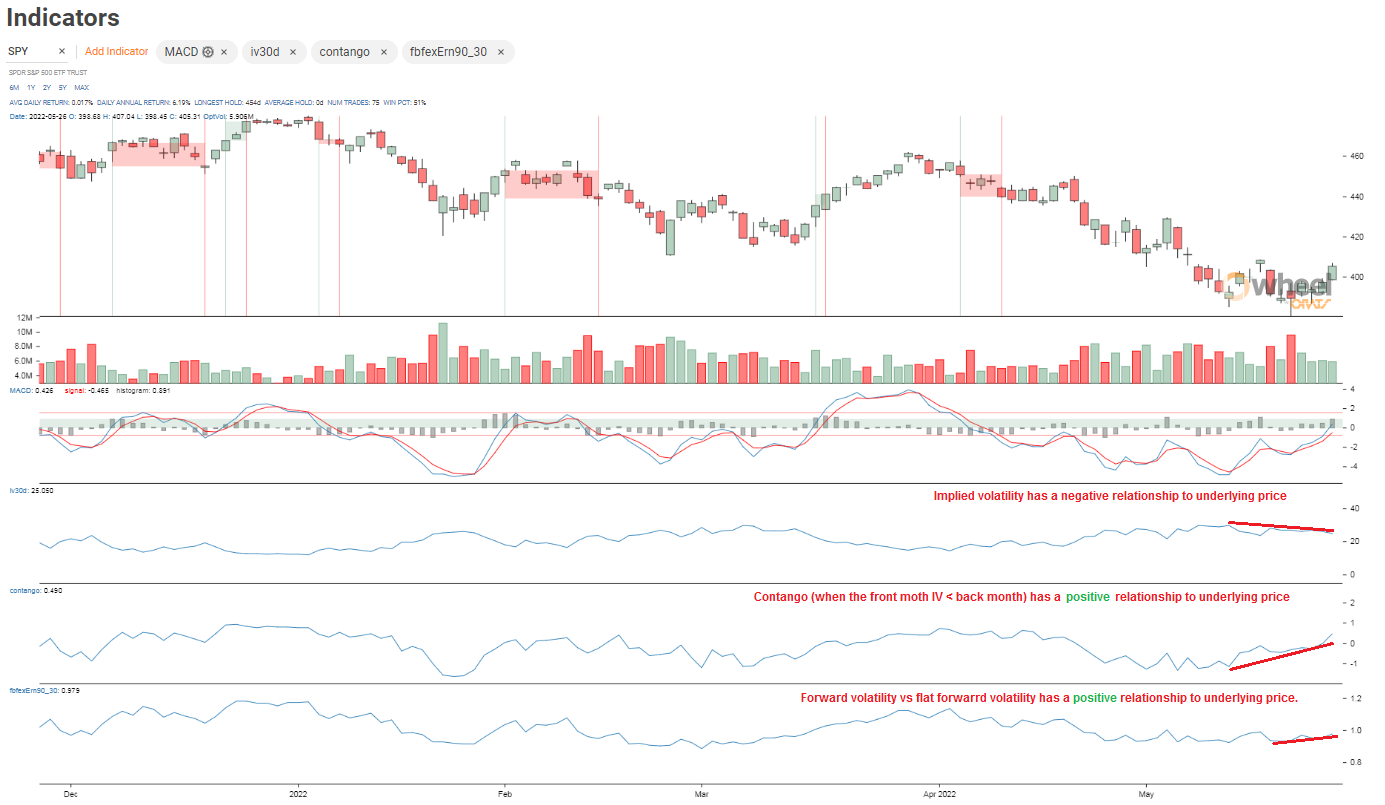Indicators
Saturday, March 30th 2019
Implied Volatility Term Structure and Interpolated IVs
Three ways to calculate constant maturity interpolated implied volatility.
Summary
ORATS offers three methods to calculate constant maturity interpolated implied volatility: simple interpolation, ex-earnings interpolation, and term structure IVs. Simple interpolation is useful for comparing relationships between constant implied volatility, ex-earnings interpolation is good for observing normalized IV readings, and term structure IVs can be used to model where other IVs line up theoretically.
Here at ORATS we have three ways to look at the implied volatility (IV) term structure and constant maturity interpolated IVs.

- Simple interpolation: We take the expiration directly before and directly after the constant maturity day reading. For example, if we were looking at the 30-day implied volatility, we might use a 26 day and a 33 day expiration and weight the 13 day slightly more because it is 3 days away from 10 and the 6 is 4 away. In our data API this reading column header is: iv10d.
- Ex-earnings interpolation: We take the earnings effect out of the implied volatility (see below). For example, if we were looking at the 30-day implied volatility, we might use a 26 day and a 33 day expiration and weight the 33 day slightly more because it is 3 days away from target of 30 and the 26 is 4 away. Moreover, if the earnings announcement is in 28 days, the portion of the IV attributable to earnings will be removed from the IV of the 33 day expiration (the 26 day expiration would not have an earnings effect). In our data API this reading column header is: exErnIv30d.
- Term structure IVs: Whereas the two examples above use just two expirations to calculate a constant maturity IV, this method uses all expirations and minimizes the difference in a formulaic rational term structure from the term structure made using just two constant maturities, a 30 calendar day IV and a 2 year IV. An implied earnings effect is also simultaneously solved for to develop this term structure. In our data API this reading column header is: orIvXern20d (called this for 20 business days or 30 calendar days), orIvXernInf (called this as it relates to an infinite or asymtote), and impliedEe (implied earnings effect).
Each of these has important applications. Simple interpolation is great for comparing relationships between the 10, 20, 30, 60, 90, 180 and 365 day constant implied volatility. Ex-earnings interpolations are great for observing normalized IV readings. Term structure IVs can be used to model where the other IVs line up theoretically vs a target expiration IV and see if there is any edge.
Disclaimer:
The opinions and ideas presented herein are for informational and educational purposes only and should not be construed to represent trading or investment advice tailored to your investment objectives. You should not rely solely on any content herein and we strongly encourage you to discuss any trades or investments with your broker or investment adviser, prior to execution. None of the information contained herein constitutes a recommendation that any particular security, portfolio, transaction, or investment strategy is suitable for any specific person. Option trading and investing involves risk and is not suitable for all investors.
All opinions are based upon information and systems considered reliable, but we do not warrant the completeness or accuracy, and such information should not be relied upon as such. We are under no obligation to update or correct any information herein. All statements and opinions are subject to change without notice.
Past performance is not indicative of future results. We do not, will not and cannot guarantee any specific outcome or profit. All traders and investors must be aware of the real risk of loss in following any strategy or investment discussed herein.
Owners, employees, directors, shareholders, officers, agents or representatives of ORATS may have interests or positions in securities of any company profiled herein. Specifically, such individuals or entities may buy or sell positions, and may or may not follow the information provided herein. Some or all of the positions may have been acquired prior to the publication of such information, and such positions may increase or decrease at any time. Any opinions expressed and/or information are statements of judgment as of the date of publication only.
Day trading, short term trading, options trading, and futures trading are extremely risky undertakings. They generally are not appropriate for someone with limited capital, little or no trading experience, and/ or a low tolerance for risk. Never execute a trade unless you can afford to and are prepared to lose your entire investment. In addition, certain trades may result in a loss greater than your entire investment. Always perform your own due diligence and, as appropriate, make informed decisions with the help of a licensed financial professional.
Commissions, fees and other costs associated with investing or trading may vary from broker to broker. All investors and traders are advised to speak with their stock broker or investment adviser about these costs. Be aware that certain trades that may be profitable for some may not be profitable for others, after taking into account these costs. In certain markets, investors and traders may not always be able to buy or sell a position at the price discussed, and consequently not be able to take advantage of certain trades discussed herein.
Be sure to read the OCCs Characteristics and Risks of Standardized Options to learn more about options trading.
Related Posts



